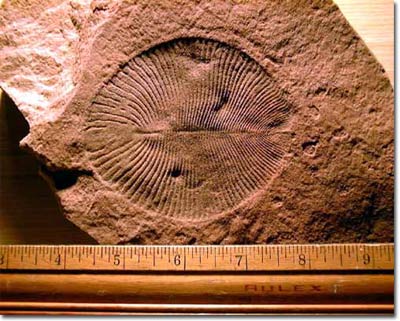The explosions of life
600 million years ago, just before the Cambrian century many multicellular life forms appeared through evidence of fossils in Ediacara.
The history of life on Earth still has many mysteries. Charles Darwin's theory of evolution talks about how species evolve over time: It is a long process of genetic modification and natural selection and elimination. However, according to recent studies, the history of life may not follow the path as expected. Life progressed by continuous jumps, thereby producing hundreds of forms of living things in a very short time.
The world has known two of the above " steps ". The most famous period of about 542 million - 520 million years ago is called the 'blast' . The only place is Mont Burgess (Canada) that provides scientists with important evidence of a period through which lay the foundation for most animal groups today. Vegetation in Burgess has saved a number of mysterious cell shapes and seems ' foreign ' as if they were 'fruitless experiments' of evolution.

Dickinsonia sp - a fossil of Vandian animals related to burning worms (Photo: Berkeley.edu)
In an article published on January 4, 2008 in the journal Science of an archaeological group, it was found traces of the first strong rise of life 30 million years ago . Therefore, they studied in detail the vegetation in Ediacara (Australia), the oldest fossils of multicellular organisms. The shape and structure of the fossils suggests that the species evolved so strongly and rapidly that they were almost completely different from previous life forms . Scientists rely on this evidence and draw conclusions about the existence of the first ' evolutionary explosion ' (bigbang evolutif) and it is called the Avalon ' explosion '.
If so, the theory is a rationale for theorists: Evolution is the result of an interruption. One of the hypotheses is Stephen Jay Gould's bioequivalence hypothesis. The evolution of humanity includes a long range of biological balance of brief changing periods such as the creation of organisms.
Today many scientists are still investigating what causes this intense development. In the case of the Cambrian explosion, the most environmental factors are most concerned: Chemical signs show an important change in the climate and chemistry of the ocean. About Ediacara, the authors assume that due to the sudden yield of oxygen as well as the apparent warming of water in the ocean. However, scientists still cannot explain in the case of Burgess. Currently, all are in the research stage to make the most accurate conclusion.
- The supernova explosion can destroy Earth from 50 light years
- Explosions in the universe destroy life on Earth
- Why the dead body
- NASA investigates explosions recorded at 64 points around the world
- The solar system fits in 'bubble'
- 10 most horrifying explosions in human history
- New discoveries about big explosions in the universe
- Discover shocking nearly 500 space explosions in the galaxy core
- Discover the first evidence of the Big Bang big bang
- 10 million explosions in the planet's largest machine
- How long will life on Earth exist?
- The meteorite that fell on the city in Argentina caused a huge explosion
 Discovered an ancient centipede fossil 99 million years old
Discovered an ancient centipede fossil 99 million years old Discovered bat-like dinosaurs in China
Discovered bat-like dinosaurs in China Discovered a 200-year-old bronze cannon of the coast
Discovered a 200-year-old bronze cannon of the coast Discover 305 million-year-old spider fossils
Discover 305 million-year-old spider fossils